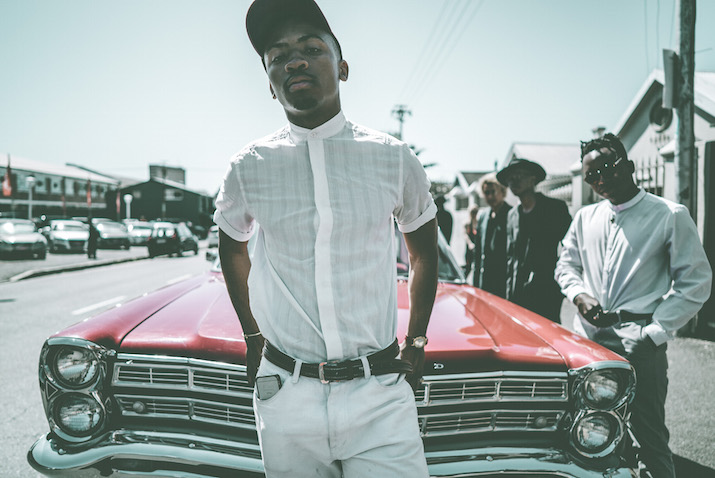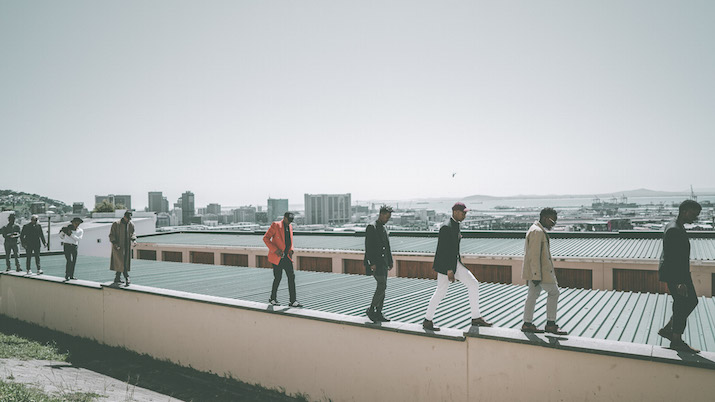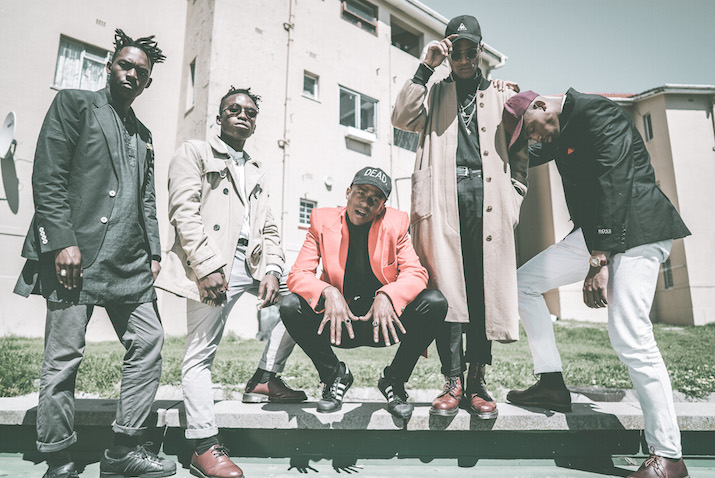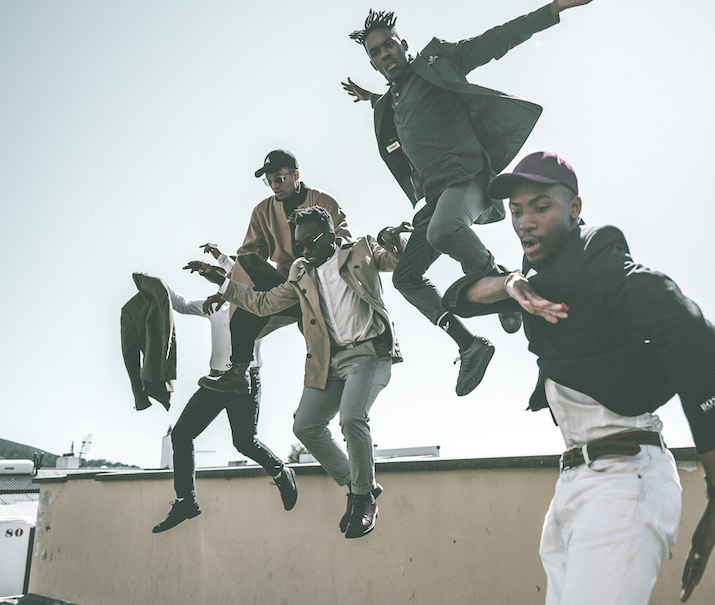TONESOCIETY: RECLAIMING URBAN SPACE FOR SOUTH AFRICAN SARTORIALISTS

Afro-centric styles are often visually represented as a conquest of the urban space.
I have written about blipsters who perform cool as a “proactive occupation” of the streets of the Western metropolis, and about South African sartorialists who collaborate with international brands to showcase township fashion’s message of emancipation. I have also sketched an analysis of the aesthetic of the township street style here and here, contending that the limiting geography of the township is an essential visual referent of South African sartorialism. The elegant young men in their stylized poses are photographed within the layered fabric of what once was (and to a certain extent still is) a social geography of regulated mobility, where inclusion and freedom coexisted with estrangement and containment.
These case studies show that Afro-centric refinement is an expression of the urban experience, particularly the sense of familiarity and foreignness that the black body experiences in the urban environment. Although urban alienation is not exclusive to the black experience, it is in fact the affect of modernity par excellence, for racialized individuals it acquires a specific phenomenological value due to the status of blackness as simultaneously invisible and hypervisible in the modern metropolis. Monica Miller stresses this paradox when she writes that elegance has always been a weapon the black individual employs to turn this phenomenology of absence “into presence” (2009, Kindle edition, unpaginated). The black dandy chooses the street to “announce [his/her] arrival”; as he strolls the all-white space of Main Street, he/she subverts societal boundaries, at the same time exercising his/her right to citizenship by overcoming actual limitation to his/her mobility (Ibidem).

In 21st century new media culture, the cityscape is a core element of the Afrosartorial aesthetic apparatus. It is essential to articulate the Afrosartorial politics of embodied modernity. A recent example of this notion appeared in OkayAfrica. Last October, the platform published an editorial by Imraan Christian entitled ‘Rise From The Roots’, which pictures a group of nine young black men, the ToneSociety collective, in the open, against the backdrop of the suburban low-rises of District Six in Johannesburg. The youths are styled in tight trousers, buttoned-up shirts, sports jackets and coats in mostly neutral colours (gray, black, beige, and white), wearing accessories like baseball caps, sunglasses, rings and necklaces. The youths are brazen; they look straight into the camera, one of them unapologetically lighting up a spliff. They pan out in pyramidal formation across the empty street, laying against a cherry Ford T-bird, claiming possession of the iconic car. They sit on the curb and rest by the wall with an unhurried way about them. They jump from the top of a wall.


ToneSociety own their surroundings and take their time getting ready for action. The apparently boundless scope of the social geography in which they move is in the details of the images. Some of the youths are captured buttoning up their shirts or playing with a watch as spotless leather shoes rest firmly on the ground, perfecting the last touches of a presentation which the American car promises to carry far and wide.


Christian emphasizes that his work is a means to give substance to the phenomenology of black presence in the African city. “For us, this simple act of being a large group of black males in a public space, with the only purpose of expressing ourselves, feels liberating. In that space, we feel like our dreams/aspirations/truths are valid becuase they are recognised in the space we have created for each other. In other words, we give each other context, and the amount of growth that we have experience simply allowing each other to be has been a gift for all of us. In my 22 years in Cape Town, I’ve never quite experienced something like this, and it’s a breath of fresh air for me.” Significantly, the editorial was shot in District Six, an area that saw the forced removal of tens of thousands of black South Africans at the hands of the apartheid regime. The location is, therefore, very much part of Christian’s statement about affirmative blackness, as it associates the youth’s sartorial performance and aspirations with an ongoing negotiation of repressed collective memory.

In an essay on Johannesburg’s Y subculture, that formed in the late 1990s and early 2000s around YMagazine, Sarah Nuttall observes that in post-apartheid South Africa the city “becomes the engine for self-stylizing” (2008: 114). She explains that the politics of urban sartorialism of contemporary youths remix established signifiers of racial and class identity.”[A] sartorial style is being marked as an in-your-face contemporary phenomenon […] the performance of township culture […] has emerged with new vigor in the contemporary context. […] Township culture is translated from a socioeconomically stagnant into a high-urban experience.” (Nuttall 2008:100, italics in the text). Finally, she contends that the urban subculture of “the hip bucolic” articulates “the still-recent emergence of the black body from its history of invisibility under apartheid […] and […] the relative fluidity with which black-middle class culture locates itself in the urban matrix after a long period of exclusion” (96).

All these elements come into play in Christian’s editorial and, I think, in other examples of contemporary South African sartorialism, whenever fashion and style are envisioned and experienced in formerly segregated urban environments.
References:
Miller, Monica, Slaves to Fashion: Black Dandyism and the Style of Black Diasporic Identity (Durham & London: Duke UP, 2009)
Nuttall, Sarah, “Stylizing the Self” in S. Nuttall and A. Mbembe (eds.), Johannesburg: The Elusive Metropolis (Durham & London: Duke UP, 2008)